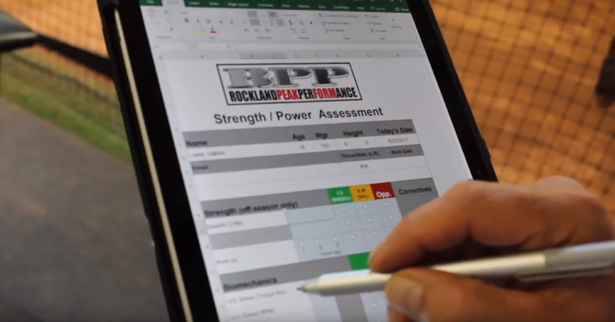
As an athlete, you are not able to move efficiently if your body isn’t in a position to do so. Incorporating assessments, strength training and data analytics into how we train players is a bit of an art. Since each and every player is different in every way, the key is to parse through the information and determine which pieces are relevant for each player. Below is a typical assessment for position players at our facility and it’s broken up into several sections:
Let’s review these with some specificity…
Movement and Strength Assessment (16 and older) – Ball players move in all three planes of motion so their assessment and programming should reflect that. The Assessment is an extensive anatomical evaluation of the player’s overall physicality and mobility.
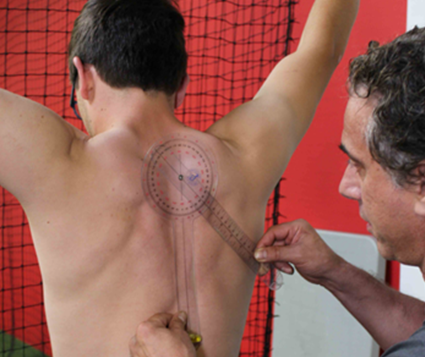
Physical limitations and imbalances, from a strength and mobility standpoint, can have profound effects on a player’s ability to perform at his max potential. The movement and strength assessment cover a variety of topics, including:
-
- Mobility and Stability
- Strength and Power Testing
- Force Velocity Profiling
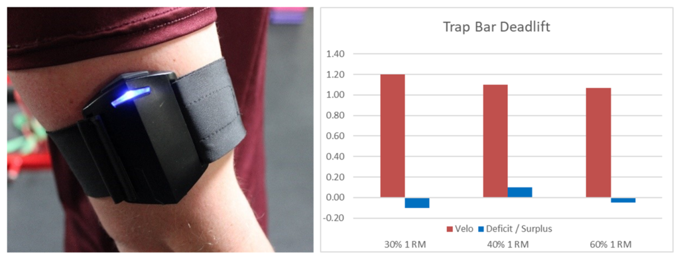
Video Review and Analysis – Much like pitching, the swing happens at such a high speed that it’s hard to really capture the nuances of where mechanics may be breaking down by simply looking at it with the naked eye. During our video analysis we breakdown hitting into two phases as follows:
-
- The Stride Phase (linear)
- The Swing Phase (rotational)
The Stride Phase begins at set-up and ends when the player commits to the pitch (approximately at heel plant), at which point we immediately transition to the Swing Phase. Let’s begin with the Stride Phase, which we further break down into the following components:
-
-
- Setup / Stance
- Excessive Negative Weight Shift
- Poor Rear Hip Load
- Inability to Maintain COM
- Lack of Linear Momentum
- Lack of Independent Hands
- High Elbow
- Losing the Barrel
- Stride Length
- Lack of Lower Half Stability
-
The Swing Phase (rotational) begins as the front leg blocks at heel plant and the body will begin to accelerate its rotation against a firm front side ultimately ending at contact. The following are some of the key positions we look for that comprise what we believe to be an efficient rotary pattern.
-
-
- Front Knee Angle
- Inefficient Lead Leg Block
- Poor Axis of Rotation
- One-Piece Swing
- Push
-
Using video analysis allows us find key links in the chain such as poor blocking or an inefficient scap load that can be improved and work them into creating a seamless more “efficient” swing. It also helps us better understand the sequencing report a bit more. Which brings us to our next set of metrics.
Kinematic Sequencing with K-Vest (16 and older) – Not all hitting motions are created equal. Some guys rely more on strength, some guys elasticity and some are simply genetic “outliers”. But analysis in numerous studies has revealed that there is one common denominator on how athletes create maximum power behind the plate and that’s creating a proper sequence of events from the ground up all the way through at the point of contact. This is commonly referred to as an efficient “kinematic sequence”.
Generating and transferring speed throughout the body requires a specific transfer of segmental peak angular velocities that allows players to transfer force more efficiently. It can be only viewed through motion capture sensors placed on the athlete’s body.
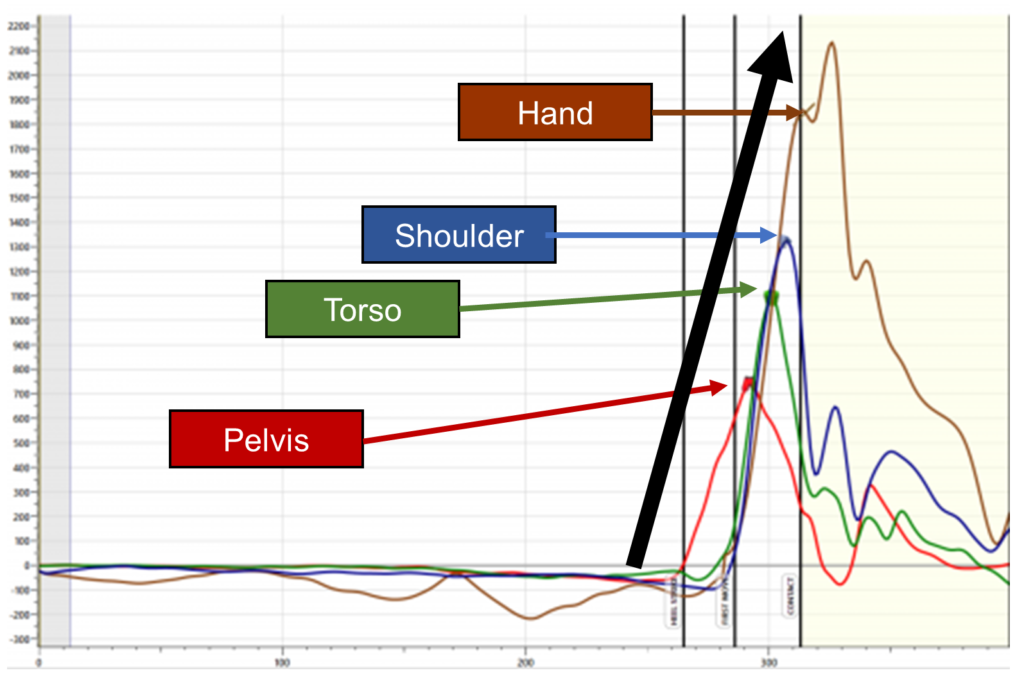
Presented differently, in most cases you’re looking for this sequence:

By simply reviewing WHEN the lower half begins to rotate in thesequence, it is easy to visualize if an athlete is ready to begin his rotational phase. This puts the athlete in the best position to begin to rotate and clear his hips in order to create optimal acceleration and deceleration rates all the way through to the point of contact. If the athlete initiate his swing with his Torso, say a 2-1-3-3 sequence, where you get the Torso (green) moving first and his Pelvis (red) is slightly delayed, there is a greater chance that he will be forced to make decisions prematurely and likely have a hard time finding consistency at the plate.
Swing Metrics – We use Blast Motion sensors for analyzing swing metrics. The sensor provides data on several metrics, including:
-
- Attack Angle (degrees) (click here)
- Rotational Acceleration (g) (click here)
- Bat Speed (mph)
- Peak Hand Speed (mph)
- Early Connection (degrees)
- Connection at Impact (degrees)
- On Plane Efficiency %
The above metrics can tell a great deal about a player and his abilities at the plate. Some even can point to issues elsewhere in the chain. For example, Rotational Acceleration measures how quickly your bat accelerates into the swing plane. It is a good indicator of how you build bat speed by sequencing properly vs. pulling the bat with your hands. The quicker your rotational acceleration, the more power you will have at contact and you will also have more time to decide at the plate. It is measured during when the bat transitions from the load into the rotation, early in the swing to capture movement patterns of the player.
Rotational Acceleration is hardly ever evaluated in normal settings, yet it could be one of the most important factors in making you successful at the plate. For example, if your Time to Contact and Attack Angles are lower than they should be at contact, then it could simply be the fact that you just can’t get there fast enough by the time you make a decision to swing the bat. What’s likely lacking? Your Rotational Acceleration!
Batted Ball Results – Sections reviewed above all address pre-contact topics. Batted Ball results are derived HitTrax. It provides a plethora of data in a variety of formats on batted balls that can help us evaluate a hitter’s performance at the plate, including spray charts, depth of contact and strike zone information.
There are generally two benefits that come with HitTrax. First, are obviously all the areas a player could improve. Equally important is for players to understand their strengths and weaknesses at the plate, so they could make more informed decisions and be better prepared going into competition.
The following is a sampling of the post-contact results we review:
-
- Basic Metrics
- Average and Peak Exit Velo
- Launch Angle
- Hard Hit Balls
- Spray Charts
- Basic Metrics
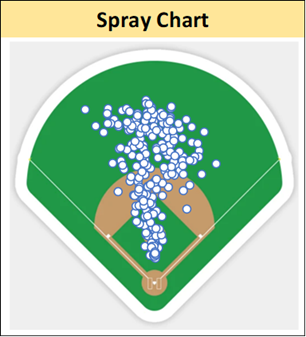
-
- Depth of Contact
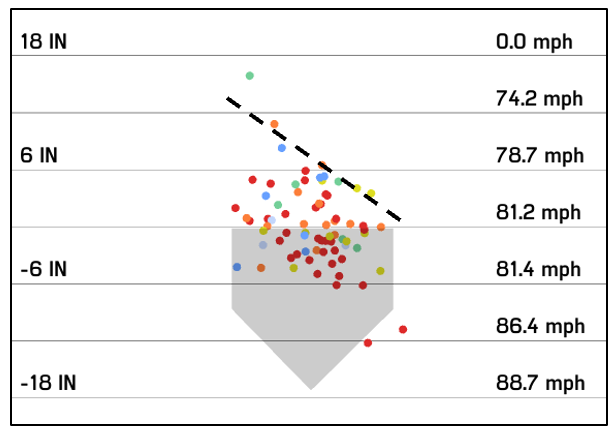
-
- Strike Zone
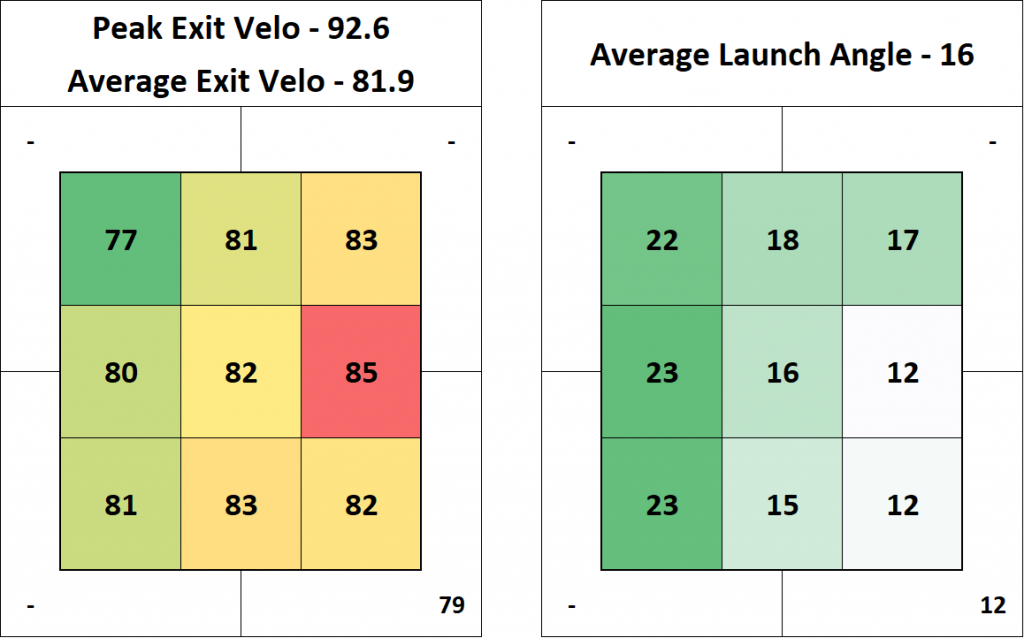
Assess and Re-Assess Model – At the conclusion of the initial assessment and data collection, we begin to target areas for improvement and prepare a going forward plan. The plan is highly individualized. However, the assessment doesn’t end after the initial day. At various times during the program we re-assess our players to help verify if positive changes have been made. This not only helps validate our training protocol but helps validate its effectiveness as well.
Summary – Being able to make consistent hard contact is the differentiator between good hitters and great hitters. By digging in deep all the way from the first move to contact, we begin to understand how and why the player performs the way he does at the plate. Our programming incorporates all the above information to prepare a going forward plan of action.
By Nunzio Signore and Bahram Shirazi (owners at RPP Baseball)
If you’d like to be placed on our email list please enter your email address below!

